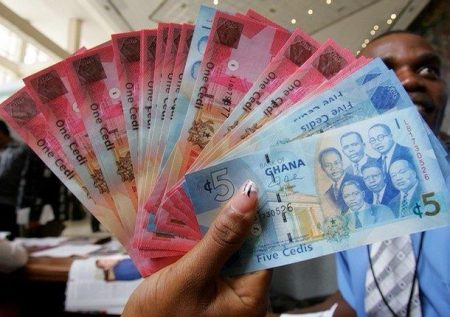The Ghanaian cedi experienced a slight depreciation against the United States dollar on Wednesday, April 2, 2025, according to data compiled from various sources, including Cedirates.com, a reliable platform for currency and fuel updates in Ghana. The cedi traded at an average buying rate of GHS15.39 per dollar and a selling rate of GHS15.84. This signifies that individuals seeking to purchase dollars would pay GHS15.84 for every dollar, while those selling dollars would receive GHS15.39 for each dollar. This marginal depreciation reflects the subtle fluctuations in the foreign exchange market, influenced by various factors such as supply and demand dynamics, international trade balances, and investor sentiment.
Forex bureaus, which facilitate over-the-counter currency exchange, offered slightly different rates. Individuals exchanging dollars for cedis could obtain GHS15.60 for every dollar, while those converting cedis to dollars would need to pay GHS16.00 for each dollar. This difference between the buying and selling rates, known as the spread, represents the profit margin for the forex bureaus. The slightly higher rates at forex bureaus compared to the interbank market can be attributed to factors like operational costs and market dynamics.
The interbank market, where banks trade currencies among themselves, witnessed the cedi trading at GHS15.52 for buying dollars and GHS15.54 for selling dollars. These rates tend to be more competitive than those offered by forex bureaus due to the larger volumes traded and the direct involvement of financial institutions. The minimal difference between the buying and selling rates in the interbank market indicates a relatively stable exchange rate environment between the cedi and the dollar.
The cedi’s performance against other major currencies, the British pound and the euro, also experienced fluctuations. For the British pound, the average exchange rate for converting pounds to cedis stood at GHS19.82, while the rate for converting cedis to pounds was GHS20.51. This difference in rates reflects the prevailing market conditions and the relative strength of the two currencies. Similarly, the euro traded at an average of GHS16.53 for exchanging euros for cedis and GHS17.18 for converting cedis to euros.
The Bank of Ghana’s interbank market, which reflects the official rates set by the central bank, recorded a slightly different picture. The pound was selling at GHS20.11, while the euro was trading at GHS16.82. These rates often serve as a benchmark for other financial institutions and influence the overall exchange rate dynamics in the country. The slight variations observed between the Bank of Ghana’s rates and those in the broader interbank market can be attributed to factors such as market liquidity and specific trading activities.
Money transfer operators, such as LemFi and Afriex, offered competitive rates for remittances from the US or the UK to Ghana. LemFi offered a rate of GHS15.38 per dollar, while Afriex provided a slightly more favorable rate of GHS15.15 per dollar. For the British pound, LemFi offered GHS19.90, and Afriex offered GHS19.98. For euro transfers, Afriex offered GHS16.71, while LemFi’s rate was GHS16.63 per €1. These competitive rates offered by money transfer operators reflect the growing demand for efficient and cost-effective cross-border remittance services.
Finally, for digital subscription payments to services like Netflix, Spotify, and Apple Music using Visa and Mastercard, the exchange rate stood at GHS16.64 for both card networks. This unified rate for digital subscriptions simplifies transactions for consumers and provides a consistent exchange rate for these specific types of payments. The rate for digital subscriptions being higher than some other quoted rates may be attributed to processing fees and other charges associated with international transactions.














